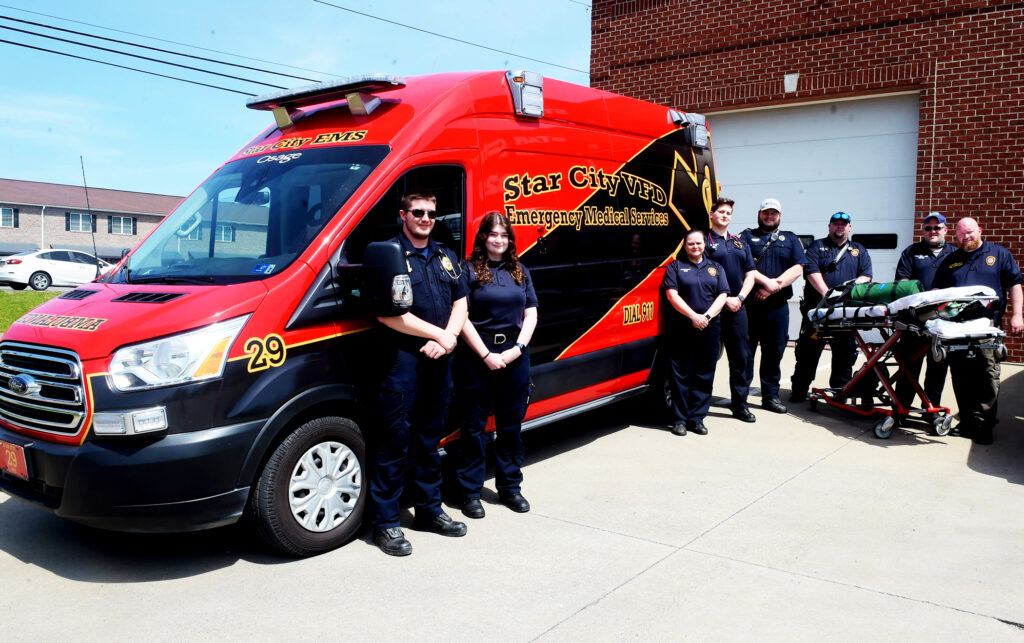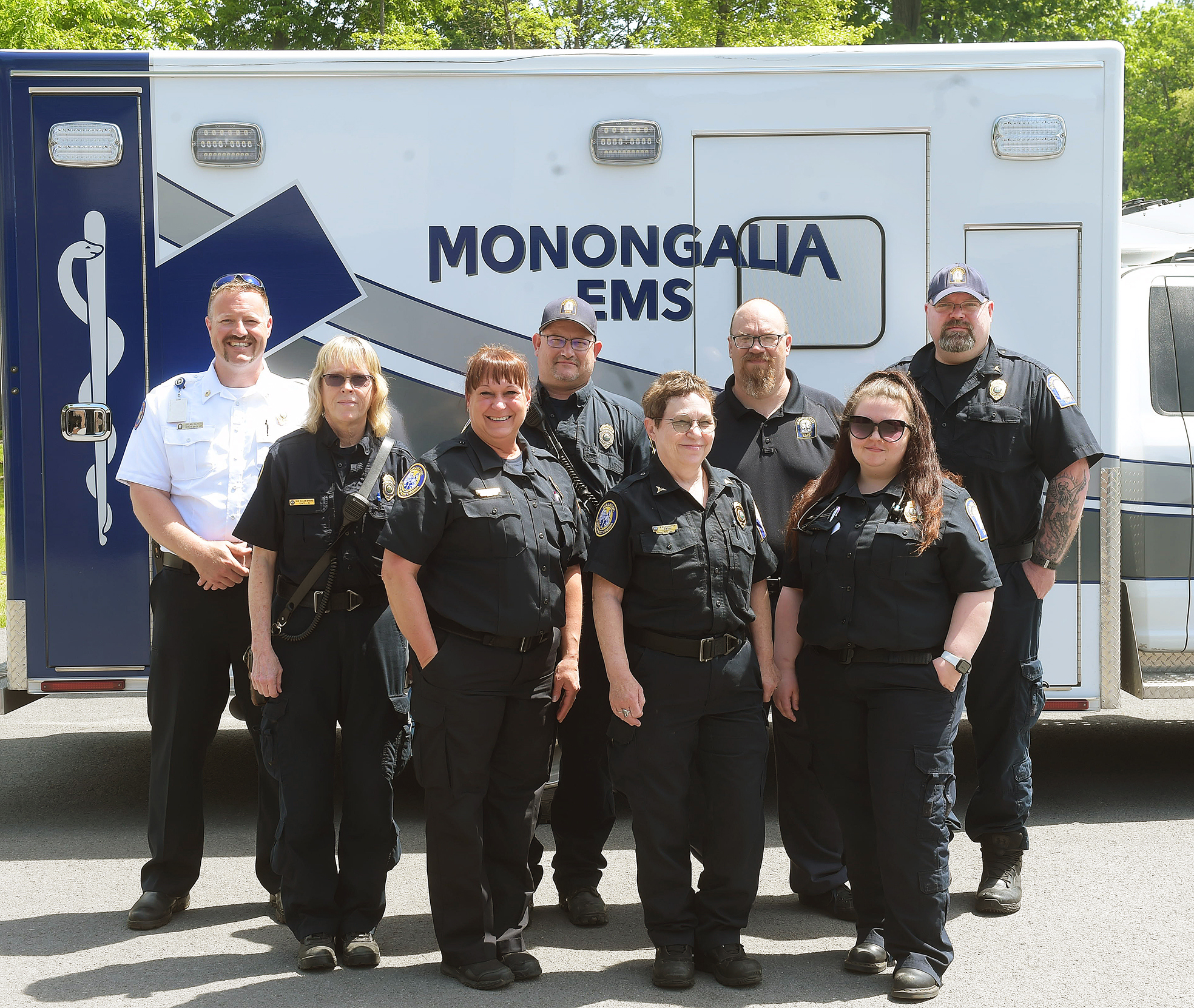National EMS Week is a time to recognize and celebrate paramedics, EMTs, and the entire EMT workforce.
The week of May 16-22 was authorized as National EMS Week by President Gerald Ford in 1974, making 2021 the 46th annual EMS week, according to the National Association of Emergency Medical Technicians.
“It’s a good opportunity to shed light on a branch of emergency services that sometimes doesn’t get the attention that I certainly believe it deserves,” said John Hitchens, Director of EMS for Star City Volunteer Fire Department.
Traditionally, Mon EMS does a lot of public facing events to showcase what they do and how they do it, Executive Director of Mon EMS Forest Weyen said. This year, though, the focus was inward. Weyen said food was provided every day, an ice cream social was held on Thursday, and massages were offered one day.
“Our providers are tired,” Weyen said. “They have been dealing with a pandemic for over a year and it’s a daily thing.”
Hitchens said his providers barely missed a day during the pandemic — all while following COVID-19 guidelines, wearing proper PPE, and disinfecting equipment more frequently.
“It’s not an easy task for them,” Hitchens said. “They still have emergency life-saving procedures to perform while being encumbered, everything takes longer, but they never backed off and just kept pushing through.”
EMS is a specialized branch of medicine with highly trained providers that need to be ready for anything from minor injuries to major traumatic events sometimes involving multiple people, Weyen said.

The technology used by EMS today is the biggest change Hitchen has seen over his 25 years in the profession. For example, Star City EMS has the ability to provide a video laryngoscopy — a camera mounted on an intubation tube to increase success rates.
Cardiac monitors in ambulances now send information to hospitals in advance of the patient arriving so doctors can prepare based on what they see, and ultrasound technology isn’t available locally yet, but is on the cusp of being standard, Hitchens said.
The profession used to be heavily volunteer-based with many volunteer EMS departments just like volunteer fire departments, but with the increased complexity and training requirements, it’s a lot to ask of a volunteer these days, Weyen said.
Hitchens said it’s wrong to view EMS as just ambulance drivers. It’s a highly educated workforce. “We’re doing what the majority of the medical field does except we’re doing it in the back of a moving ambulance going down the road by ourselves,” he said.
One big challenge facing the industry is pay.
“If you talk to the run-of-the-mill EMS employee that’s been doing it for a while, they’re going to say ‘why am I making this much money here when I could make more working for a local restaurant,’ ” Hitchens said. “It’s that low.”
Not every EMS department is funded the same with some, like Star City, getting no funds from the municipality they serve. The costs of running the department such as fuel and insurance increase each year, while federal and state reimbursement rates for running calls does not, which leaves a shrinking pot to pay employees from.
“What we get paid for running the call has not caught up with the level of care we’re providing,” Hitchens said.
TWEET @DominionPostWV




